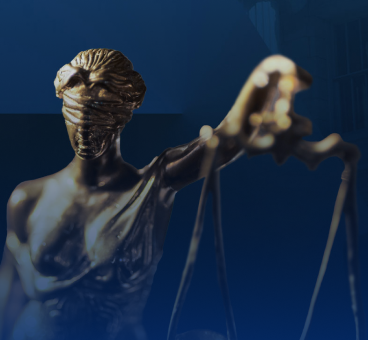The six most common types of storm damage are flood, wind, ice, lightning, impact, and hurricane damage. There are countless natural hazards that can cause such damage, from hail storms to hurricanes. Some of the worst damages from a storm can occur days later due to anything from flooding to downed power lines.
If your property was damaged in any kind of storm, you can call our storm damage lawyer in Boca Raton for assistance. We understand what goes into a successful insurance claim, and we can work tirelessly to ensure you are treated fairly.
Water and Flood Damage
Storms that involve heavy rainfall can cause floods and flash floods. If this water enters your property, it could cause everything from structural issues to the growth of deadly mold.
It is important to distinguish between water damage and flood damage. The latter occurs when water from the outside, such as an overflowing river or storm surge, enters your home. Water damage happens when a pipe or an appliance inside the building breaks. Both types of damage can occur as a result of a storm.
How you recover compensation for damage done by water depends on where that water came from: your homeowners’ insurance policy may cover water damage, but flood damage typically falls under a separate policy.

Wind Damage
Another of the six most common types of storm damage involves heavy winds. High wind speed can wreak havoc on your property by:
- Destroying siding or gutters
- Damaging roof shingles
- Uprooting trees
- Shattering windows
- Damaging external utilities, like HVAC systems
The lasting consequences of severe winds cannot be understated. Even when the immediate damage does not appear to be severe, wind damage can compromise the integrity of a structure. This could potentially lead to collapse.
Wind-related roof damage can also worsen the collateral consequences of a heavy storm. When the roof is compromised, rain or hail may fall directly into the building, dramatically increasing the risk of flood damage within the structure.
Impact Damage
An impact occurs any time winds or flood waters pick up and move an object with enough force to turn it into a projectile. Any item can cause significant damage if it moves quickly enough. Your property might suffer damage because of:
- Outdoor furniture
- Tree branches
- Motor vehicles
- Satellite dishes or antennae
- Broken shingles, siding, or fencing
Impact damage can affect any part of your building, but windows may be the most vulnerable. Once a window breaks, a projectile may enter your property and leave a hole through which other objects, wind, and water can also enter.

Lightning Damage
According to the National Weather Service (NWS), 25 million bolts of lightning strike the United States every year. Lightning strikes can damage the structure of a home, including charring the roof or siding. The major risk in these situations is the spread of fire following a lightning strike. Even during a rainstorm, a fire could grow large enough to destroy your property.
In addition to the risk of fire, these strikes can have significant consequences for the electronics within your home. Power surges caused by lightning strikes can damage or destroy any appliances and electronic devices that are plugged in when the storm hits, including refrigerators, televisions, and computers.
The good news is that insurance usually covers lightning strikes. If you run into problems, our storm damage lawyers can get the insurer to pay for all damage caused by the strike itself and subsequent fires.

Ice, Snow, and Hail Damage
On its own, precipitation is usually not a major risk to your property. In severe storms, however, when a great deal of heavy precipitation falls within a short timeframe, ice, snow, and hail can all result in serious damage to your property. For example:
- Hail occurs when raindrops freeze, which can happen in anything from a thunderstorm to a tornado. These frozen balls of ice can damage your roof, windows, or personal property, like a parked vehicle.
- When ice and snow accumulate, there is a risk of damage to the structural integrity of your home. There is also the serious risk of flooding after large amounts of snow or ice melt.
- Ice and snow can also cause indirect damage by accumulating on tree branches, making them heavy enough to fall on powerlines or on your property.
Hurricane Damage
Some of the most catastrophic losses occur during hurricane season. According to the NOAA Office for Coastal Management, hurricanes have caused $2.6 trillion in damages in the United States from 1980 to 2023. Part of what makes these storms so dangerous is that they include multiple types of hazards in a single storm, leading to a potentially deadly combination of:
- Wind
- Tornadoes
- Heavy, sustained precipitation
- Floods and flash floods
In a worst-case scenario, hurricanes can lead to the total destruction of your property. Property owners who need an insurance payout following a hurricane often face many obstacles, starting with the fact that different types of hurricane damage (e.g., wind versus flooding) are typically covered by different policies. You might have to file multiple claims for the same storm and prove exactly how the damage to your property occurred.
Talk to GED Lawyers About Pursuing a Property Damage Claim Following a Storm
These are only some of the types of damages that could occur during a major storm. Your losses may be catastrophic, but they do not have to leave you paying for everything out of your own pocket. With the right insurance coverage, your carrier could be responsible for the cost of repairs.
Unfortunately, the insurance claims process is not always easy. At GED Lawyers, our attorneys understand the challenges that come with dealing with insurers after the six most common types of storm damage. Let us serve as your advocate during this complex process. Contact us right away to learn more through a free consultation.
